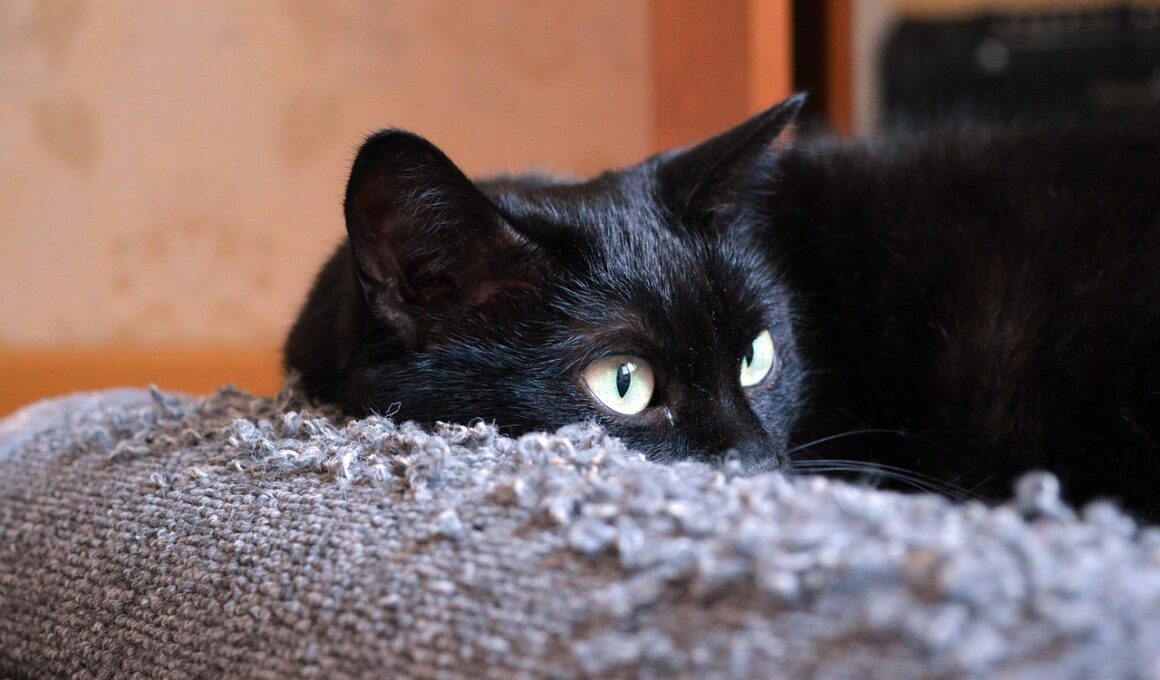Training Older Cats to Use Scratching Posts Properly
Training your older cat to use scratching posts effectively can greatly improve their behavior and environment. Many older cats may have entrenched habits, often preferring sofas or carpets to satisfy their scratching needs. With patience and the right strategies, you can redirect their impulses toward designated scratching posts. It’s essential first to observe your cat’s preferences for scratching locations. Position scratching posts nearby those areas to encourage the transition, using a mix of vertical and horizontal designs to cater to your cat’s natural instincts.Consistency is crucial, so establish a routine for encouraging use the scratching post. Use treats, praise, or interactive toys to reinforce positive scratching behavior. By associating the post with good experiences, your cat will be more inclined to use it. Additionally, try placing catnip on or near the posts, as this can attract your cat’s attention. You may need to experiment with different kinds of materials, like sisal or cardboard, to find what your cat prefers. Patience is key; it might take time, but eventually, your diligent training efforts will pay off, leading to a healthier lifestyle for your older feline friend.
Common challenges may arise when transitioning an older cat to new scratching habits. If your cat resists the scratching post, avoid forcing them, as this can lead to stress or anxiety. Instead, identify their preferences and adapt accordingly. Offering multiple scratching posts can also help. Cats often prefer variety in textures and positions, so be sure to provide options that cater to their individual tastes. Consider placing posts near their favorite resting or playing areas to promote use. Another effective approach is using positive reinforcement when they engage with the scratching post.Use treats for positive reinforcement, but be sure to do so immediately after they begin scratching the post. This association between behavior and reward is crucial for older cats who might be slower to adapt to changes. If you find your cat is particularly fond of a certain texture, such as carpet or fabric, try to find a scratching post made from similar materials. Incremental changes can make the transition smoother. Over time, your cat will learn the appropriate places to scratch, making your home more peaceful and your older cat happier.
Understanding the Reasons Behind Scratching
Understanding why your older cat scratches is essential for successfully training them to use scratching posts. Scratching serves several purposes, such as marking territory, sharpening claws, and relieving stress or anxiety. As cats age, they may experience increased anxiety, meaning providing appropriate outlets for their natural instincts becomes increasingly critical. A cat’s scratching habit can also be linked to their physical and emotional wellbeing. Keeping their environment enriched with stimulating activities is crucial for older cats who might not engage in as much play. Regular interactive playtime, combined with scratching posts, can help reduce excess energy and improve their overall mental health. Consider also your cat’s health; they may scratch less due to arthritis or other conditions affecting mobility. In this case, choose scratching posts that are easily accessible and available in various heights. Monitor your cat’s activity levels and find ways to adjust their routine if necessary, ensuring they maintain a healthy level of physical activity. With insightful observation and dedicated effort, you can understand your older cat’s scratching habits and successfully guide them toward healthy behavior with scratching posts.
Each cat is unique, and this individuality may reflect their scratching preferences. Thus, customizing your training approach can lead to better results. For example, if your cat prefers a specific spot, adapt the location of the scratching post to that preferred area. Experiment with different materials as well. Some cats favor rough textures like wood, while others may enjoy softer options such as carpet. Taking time to determine these preferences will aid in creating a successful training plan. Employment of creative methods can also stimulate interest in scratching posts. Consider placing toys or catnip on or around the posts. This can transform a simple post into a play area that encourages engagement and exploration. Gradually, your cat will begin to associate the scratching post with positive experiences, making it more appealing to them. Also, be mindful of your expectations; training older cats takes patience and persistence. Recognizing any setbacks during this process should not hinder your progress but rather serve as a learning opportunity. By fostering the right environment through observation and adaptation, you can guide your older cat toward proper scratching habits.
Incorporating Positive Reinforcement Techniques
Implementing positive reinforcement can be a game changer when it comes to training older cats to use scratching posts. Rather than responding with frustration or punishment for unwanted scratching behavior, focus on rewarding them when they use their posts appropriately. The key to positive reinforcement is timing; reward your cat immediately after they use the scratching post, whether with treats, petting, or verbal praise. This quick response helps reinforce the association between the behavior and the reward, encouraging your cat to repeat that behavior in the future. When rewarding your cat, choose high-value treats that they typically enjoy to maintain their motivation. When your cat shows interest in the scratching post but doesn’t yet use it, reward that curious behavior as well. This incremental approach prepares them for full engagement with the post later. Consistency is vital: keep rewarding them for scratching the post to strengthen the positive association over time. By practicing these techniques regularly, you’ll create an effective training regimen that helps your older cat learn to use their scratching post correctly. Their satisfaction and well-being will improve significantly, leading to a harmonious living environment.
After establishing routines utilizing positive reinforcement, it’s essential to assess the overall suitability of the scratching posts. Be sure to buy sturdy, stable ones, particularly for older cats that may need more support when scratching. This stability is crucial for ensuring your cat feels safe and secure during the process. Take careful consideration of the height and design of each post to accommodate your cat’s changing physical abilities. You may need to introduce lower, more accessible posts or those with larger bases for enhanced stability. Pay attention to the materials used for scratching surface, as it should provide enough resistance to allow your cat to effectively scratch without causing physical strain. Frequent observation may also reveal your cat’s evolving preferences, which can change as they age. Sometimes, introducing a new post can rekindle their interest in scratching behavior. Additionally, if your cat does not seem to engage with the scratching post at all, be patient while trying to reroute their instincts back onto the designated surfaces. By maintaining a keen eye and adapting to their needs over time, your efforts will continue to yield better results for both you and your older cat.
Monitoring Progress and Adjusting Strategies
As you embark on the journey of training your older cat to use scratching posts effectively, regularly monitoring progress is crucial. Keep track of their interactions with the posts and evaluate their changing habits over time. Documenting their progress could involve simple notes on their scratching frequency or the specific techniques you have employed. If you note resistance to using the scratching posts initially, remain calm; it may take time for your cat to adapt fully. Assess their overall environment, including their mental and physical stimulation. They might need more interaction or play sessions to feel more engaged. If your current strategies do not yield desired results after adjustments, don’t hesitate to try different materials or positions of the scratching posts. Some older cats require more encouragement than younger ones, so consider enlisting help from play zones or vertical climbing options nearby. The journey to successful training is less about strict timelines and more about facilitating a relaxed, positive environment conducive to learning. You’ll foster a rewarding experience for both you and your older feline as they learn to embrace their scratching posts as integral to their daily routine.
In conclusion, helping your older cat learn to use scratching posts successfully involves understanding their needs, employing positive reinforcement, and maintaining patience during training. Throughout this process, it’s essential to recognize that every cat is unique and may have different preferences and learning paces, so adapting your tactics accordingly is fundamental. Keep engaging with your cat, exploring various options, and ensuring their comfort with their surroundings. Establishing a strong bond through these methods ultimately leads to better results in habit training. Providing scratching posts designed specifically for their needs empowers your older cat to fulfill their scratching instincts without damaging your furniture. If challenges persist, remember that consulting with a veterinarian or a professional animal behaviorist can be beneficial for more advanced issues. Their expert guidance can help identify underlying health concerns or behavioral issues inhibiting your cat’s scratching habits. Enjoy the rewarding journey of training your older cat, as it not only enhances their quality of life but also creates a more peaceful home environment for you and your furry friend. By practicing diligence and adapting your techniques, you can ensure that both you and your older cat experience a satisfying equilibrium.


